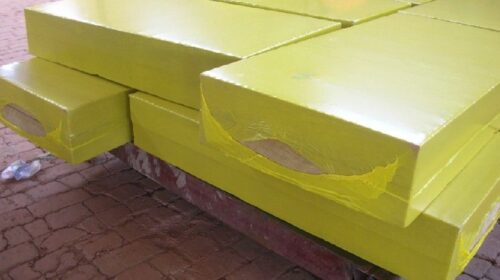Global Acoustic and Thermal Insulation Market for Electric Vehicles to Reach $1,108.4 Million by 2031
In the wake of the projected depletion of the global crude oil sources and the rising concerns over air pollution in many cities, automotive manufacturers are developing electric vehicles (EVs) as affordable, dependable, and safe alternatives to internal combustion (IC) engine vehicles. Further, increasing legislation in many parts of the world to decrease exhaust emissions from vehicles have led electric vehicle manufacturers to develop battery-electric or fully electric vehicles (BEVs).
Other types of EVs available are hybrid electric vehicles (HEVs) and plug-in hybrid electric vehicles (PHEVs). Electric vehicle sales have slowly gained momentum in many regional markets, but the market is still minuscule as compared to the global internal combustion engine-based vehicles market. As various projections indicate that electric vehicles will eventually dominate the automotive industry, many existing vehicle manufacturers, along with several new players, have started aligning their company goals toward producing electric vehicles.
A major issue discovered along with the advent of EVs is the changes in noise, vibration, and harshness (NVH) properties of a vehicle. EVs are remarkably quieter than IC engine vehicles, mainly due to the absence of the noise produced from the gasoline engine and transmission systems. Therefore, EVs can glide across a road without contributing to any noise and air pollution. In fact, several regulatory bodies, such as National Highway Traffic Safety Administration (NHTSA) and the European Parliament, have passed regulations to add artificial sounds in electric vehicles to alert pedestrians while traveling at low speeds.
Despite such a noticeable decrease in sound from an EV, there are other ancillary noises that are now prevalent in electric vehicles. These noises, which were previously drowned out in an internal combustion engine vehicle, are now audible in the absence of engine noise. An electric vehicle produces several new noises such as whining from powertrain drive and the electric motor, along with tire and external aerodynamic noises while the EV is moving. Buzz, squeak, and rattle (BSR) noise also become more apparent in an electric vehicle.
Such ancillary noises hamper the driving experience and also disturb the acoustics from sound systems or haptic feedback while driving the vehicle. Under these conditions, acoustic insulation in an electric vehicle is of great relevance. The acoustic insulation quality in EVs needs to be enhanced to prevent not only noises entering the passenger cabin from outside the vehicle but also for noises from the insides of the vehicle, such as the vehicle HVAC system and the vehicle electric drive system.
According to the latest report by CRI Report, titled ‘Global Acoustic and Thermal Insulation Market for Electric Vehicles – Analysis and Forecast (2021-2031)’, the global acoustic and thermal insulation market for electric vehicles was valued at $134.4 million in 2020 and is projected to reach $1,108.4 million by 2031, registering a CAGR of 20.45% during the period 2021-2031.
Companies Mentioned in the Report:
• ADDEV Materials
• Adler Pelzer Holding GmbH
• Armacell International S.A.
• Autoneum
• CYG Tefa
• INOAC Corporation
• Morgan Advanced Materials plc
• Pritex Limited
• Shanghai Xinan Automobile Sound-Insulation Felt Co., Ltd.
• Sika Automotive AG
• Sumitomo Riko Company Limited
• Tecman Speciality Materials Ltd
• Toyota Boshoku Corporation
• Unifrax
• Zotefoams plc
Key Questions Answered in this Report:
• What are the key drivers and challenges for players in the acoustic and thermal insulation market for electric vehicles?
• How does the supply chain function in the acoustic and thermal insulation market for electric vehicles?
• Which material type segment is expected to witness the maximum growth in the acoustic and thermal insulation market for electric vehicles during 2021-2031?
• Which are the key application areas from which different acoustic and thermal insulation materials experienced high demand during the forecast period, 2021-2031?
• Which are the players that are catering to the demand for different acoustic and thermal insulation materials?
• What are the strategies adopted by market players involved in the acoustic and thermal insulation market for electric vehicles?
• What are the key offerings of the prominent companies in the market for acoustic and thermal insulation for electric vehicles?
• Which regions and countries are leading in terms of consumption of acoustic and thermal insulation market for electric vehicles, and which of them are expected to witness high demand growth during 2021-2031?
• How is the market landscape for insulation material manufacturers expected to be formed for electric vehicles?
• What are the consumption patterns of acoustic and thermal insulation materials across different types of electric vehicles during the period 2021-2031?
• What has been the impact of COVID-19 on the acoustic and thermal insulation market for electric vehicles?

